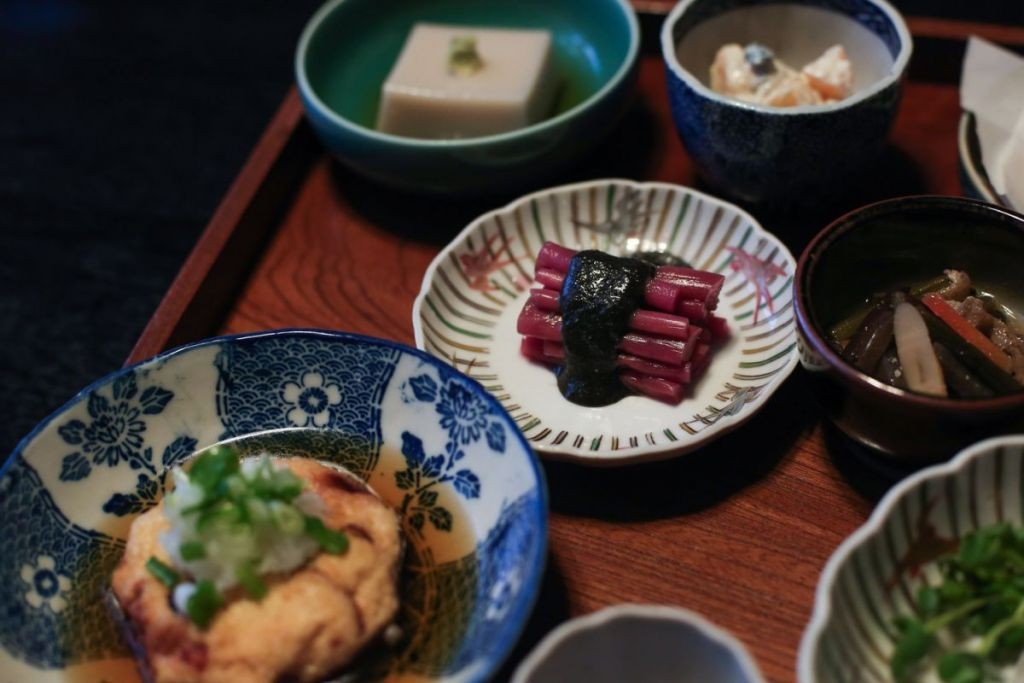This article will be focused on all things food! Explore the characteristics of Japanese food and the differences between Washoku, Yoshoku and Chuuka. Heard of the term “B-Class Cuisine?” We explain what it means and why foodies should know all about it. Lastly, a selection of 30 must-try Japanese foods when visiting Japan.
Table of Contents
- Characteristics of Japanese Food
- Different Types of Japanese Food and Their Examples
- What is B-Class Cuisine?
- 30 Popular Japanese Food to Try When in Japan
Characteristics of Japanese Food
Japanese food is reputed overseas as being nutritionally balanced and healthy. Many people attribute Japanese people’s long lives to their diet. Here, we introduce some of the characteristics of Japanese food.
Many Foods are Fermented

Starting with miso which is fermented soy bean paste, Japanese food is characterised by having a large number of fermented products. Fermentation is the process of breakdown by yeast, bacteria or microorganisms on food to give it a different taste, appearance and shelf life.
Seasonings made by fermentation include miso, soy sauce, bonito flakes and mirin. Examples of fermented foods include natto (納豆 fermented soy beans), shiokara (塩辛 fermented seafood), tsukemono (漬物 pickles) and also sake.
Characterised by Climate and Geography

Japan is a long and narrow island that stretches from north to south. This causes the climate, weather, culture, etc. to be completely different depending on location and land surface area. In areas surrounded by ocean, seafood is in abundance; areas surrounded by forest and mountains are blessed by nature with mountain vegetables. There are also fish that can be caught only in oceans and only in freshwater.
People living in each region have thought of the best way to make local produce delicious for consumption and preservation for a long time. The result is「名物 meibutsu」or local delicacies / local specialties that have been passed down for generations to this day.
Respect and Appreciation of Nature and the Seasons
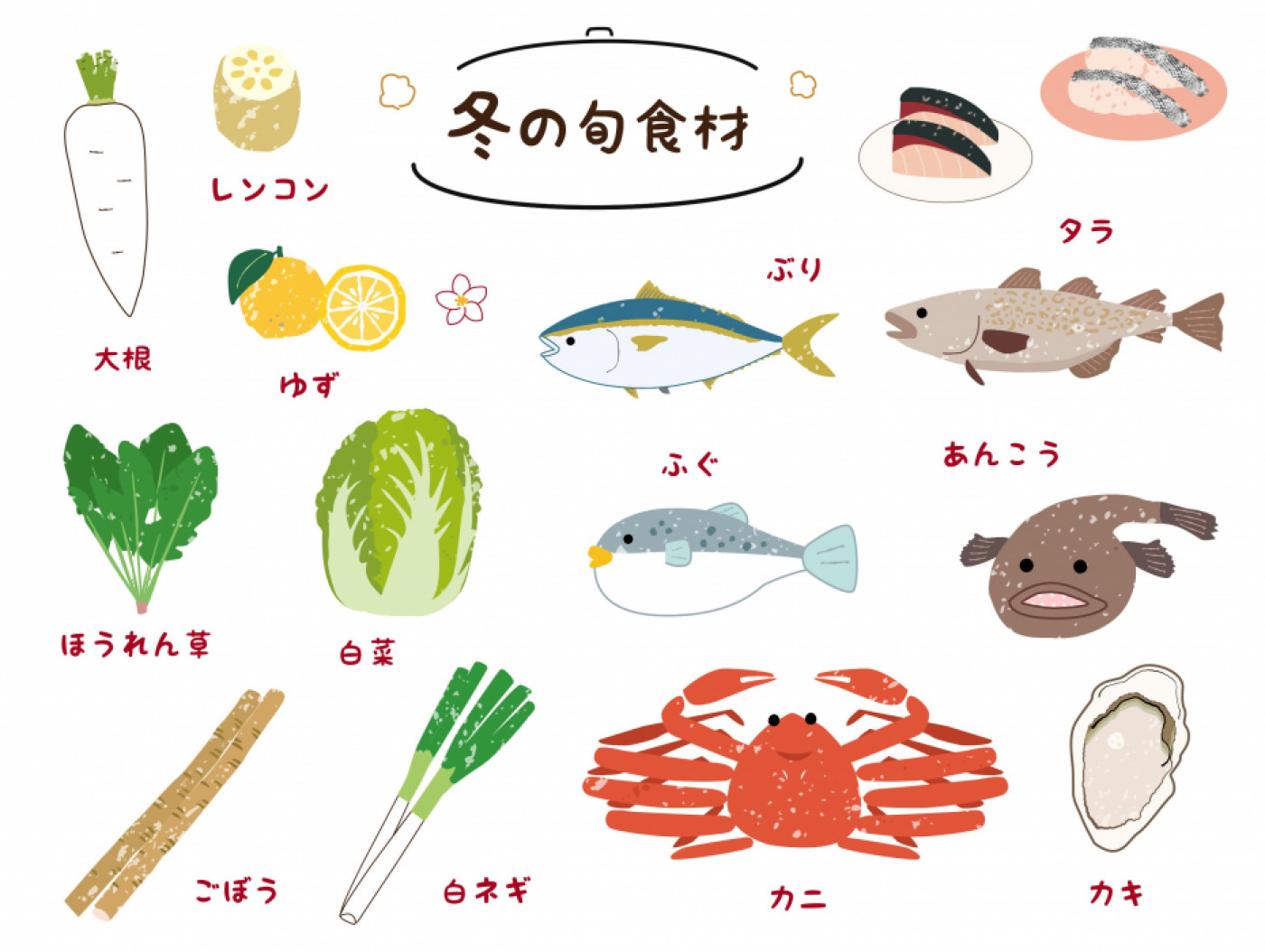
Another characteristic of Japanese food is the value of seasons, bringing rise to words like「季節限定 kisetsu gentei」meaning season-limited. As shown by cherry blossoms in spring and autumn leaves in fall, each season is very different and this applies to ingredients and food as well.
The time when an ingredient is to be harvested, or caught in cases of seafood, is called「旬 shun」meaning season in relation to food. You may come across this Kanji often in sushi restaurants. Seasonal foods, also called「旬」, is characterized by their high yields and also high nutritional value, the so-called peak season and best time. It is said that eating foods during their peak season has a positive effect on our bodies.
Japan also has a deep-rooted culture of appreciating, even worshiping, nature - Shintoism. There is a strong belief that God’s rest in nature such as mountain gods and sea gods. Many events and prayers are held to offer prayers to Gods for better harvest and good catches.
Japanese-Style Foreign Foods

In Japan, there are many foreign foods whose recipes have been changed to suit Japanese tastes and to accommodate the availability (or lack of) of ingredients. Traditional Japanese food called Washoku includes steamed rice, miso soup, simmered dishes and grilled foods. Ramen, croquettes, and curry rice which are popular foods in Japan nowadays actually have overseas origins. They have undergone changes and became popular as Japanese food. More on this below.
Writer's Pick
Different Types of Japanese Food and Their Examples
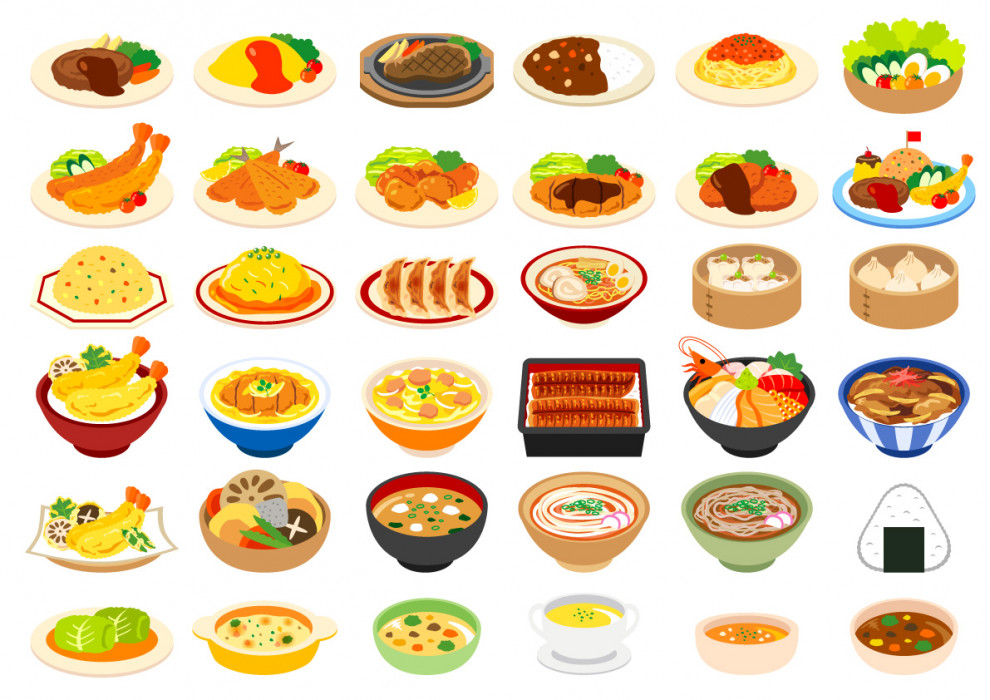
Japanese food or Japanese cuisine is a super broad term that cannot accurately convey the countless number of culinary delicacies and each of their distinguishable flavours and textures.
Doubtlessly the first thing that comes to mind when you think of Japanese food are the classic dishes like sushi and ramen which are actually separate categories of Japanese food. Which brings us to the terms of Washoku, Yoshoku and Chuuka.
Washoku 和食
The dictionary translation of washoku is Japanese cuisine, Japanese food or Japanese dish. However, in Japan washoku is a clear reference to traditional Japanese food. In fact, washoku was recognized in 2013 as an UNESCO Intangible Cultural Heritage of Humanity due to its cultural and historical importance.
Examples of washoku include sushi, sashimi, kaiseki ryori, tempura, udon, soba, and more.
Many washoku have close ties to celebratory events like ozoni for New Years, chirashizushi for Hinamatsuri, and tsukimi dango for mid autumn festival.
Yoshoku 洋食
Yoshoku is Japanese Western food and considered a type of fusion cuisine. Yoshoku dishes are heavily inspired by Western and European dishes. Many of these dishes have retained their English or European sounding names which are written in katakana.
Examples of yoshoku include Japanese curry (British), croquettes (French), castella (Portugese), hamburg steak (America), and more.
There are also yoshoku dishes that are original Japanese creations like Napolitan pasta (ketchup pasta), omurice (omelette rice), doria (rice-based gratin).
Chuuka 中華
Not to be mistaken for authentic Chinese food, chuuka is Japanese Chinese food of the fusion category. Chuuka dishes are very similar to their Chinese counterparts but have been altered to suit local tastes. There are also newly created chuuka recipes only available in Japan.
Examples of chuuka include gyoza, harumaki (fried spring rolls), nikuman (steamed meat buns), chahan (fried rice), shumai (dim sum type), and more.
Examples of chuuka originating from Japan include ramen (also called chuuka soba), karaage, hiyashi chuka (cold noodles), and champon.
What is B-Class Cuisine?
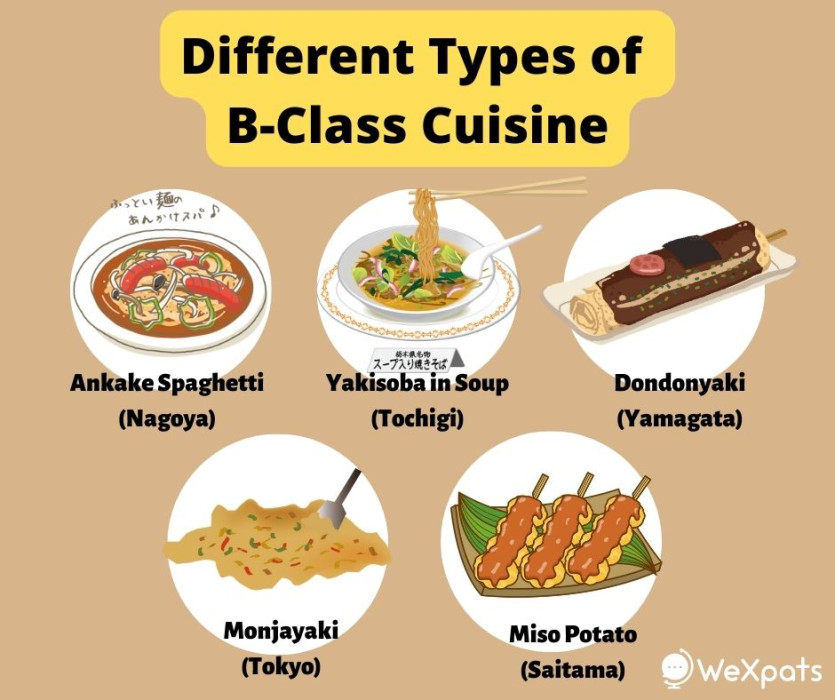
「B級グルメ B kyuu gurume」is a must-know term for foodies in Japan. It means B-Class Cuisine and refers to a category of food that is cheap yet delicious! and not high-class but tasty!
B-Class cuisines are foods that are only available at a specific place in Japan, a local delicacy of sorts though they are not particularly well-known aside from their place of origin. B-Class foods are usually only found in smaller areas like small towns, cities and countrysides as opposed to major cities.
Examples of B-Class Cuisine in Japan include mapo tofu yakisoba (Sendai, Miyagi Prefecture), nira soba (Kanuma, Tochigi Prefecture), ankake spaghetti (Nagoya, Aichi Prefecture), kushikatsu (Osaka), takoban (Kagawa Prefecture).
There’s also A-class Cuisine
Photo Credit: ©Niigata Prefectural Tourist Association
The term「A級グルメ」was first coined in 2010 in Niigata as part of a project called「雪国A級グルメ yukiguni A kyuu gurume」, or snow country A-class cuisine. The project’s purpose is to promote local cuisine prepared with local ingredients using traditional cooking methods.
A-class cuisine is higher class dining compared to B-class cuisine. They share the same qualities of being local delicacies only found in a certain place but all similarities end there. A-Class cuisine is expensive and uses high quality ingredients. Establishments that serve A-class cuisine hold an expectation of being able to provide a luxurious dining experience.
Although this term is used less often than B-Class Cuisine, it has inspired a few similar projects in other prefectures.
※ Niigata Prefectural Tourist Association, “雪国A級グルメ”
30 Popular Japanese Food to Eat in Japan
Now for the fun part, food recommendations!
1. Yakitori 焼鳥

Yakitori is skewered chicken pieces grilled over a charcoal fire. When ordering yakitori, you can pick which parts of the chicken you want like breast, tender, thigh, gizzard, liver, and skin. There are usually two options of how your chicken can be prepared, salted (塩 shio) or sauced (たれ tare). Aside from chicken, yakitori places usually do skewered vegetables and other ingredients as well. Shiitake mushrooms, green peppers, and mochi cheese are some popular ones.
2. Donburi 丼
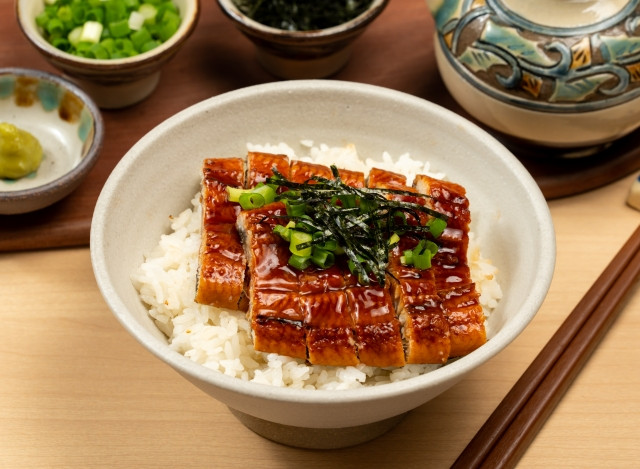
Donburi, rice bowl, is a bowl of steamed rice with toppings. There are many kinds of donburi as toppings can be anything from fish, meat, and vegetables. Popular donburi are gyuudon (beef bowl), oyakodon (chicken and egg bowl), kaisendon (seafood bowl), tendon (tempura bowl), and katsudon (pork cutlet bowl).
There are also regional donburi that use local produce and local specialties. For example, Sendai’s zukedon (pickled fish bowl), Enoshima’s shirasudon (whitebait bowl), Ehime’s B-class cuisine buhidon (charcoal grilled pork loin steak bowl), and more.
3. Tempura 天ぷら
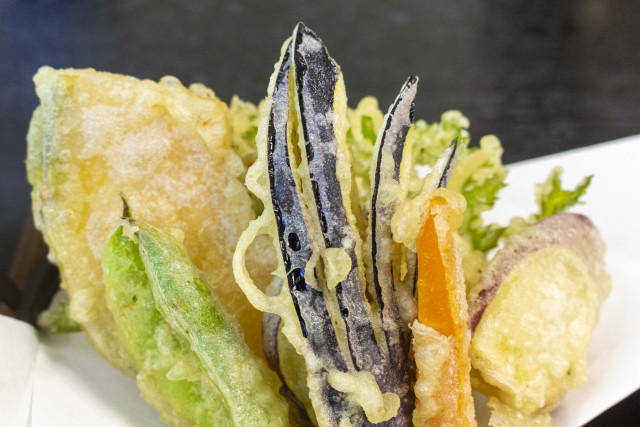
Tempura is ingredients coated with batter then deep fried to form a crispy coating. It can be served in many ways, as a rice bowl called tendon, as noodle toppings (particularly udon and soba), as the main dish for teishoku (set meal), or as a side dish. Tempura is usually served with a dipping sauce called tentsuyu made up of dashi, soy sauce, mirin and sugar.
Popular tempura ingredients include prawn, eggplant, squid, and pumpkin slice. Seasonal ingredients are also used at certain times of the year like sweet potato in autumn and rapeseed flowers in spring.
4. Takoyaki たこ焼き

Takoyaki, a local specialty that represents Osaka, is a Japanese hot snack where a piece of octopus is cooked with a flour batter and shaped into a ball. Thus it’s common name in English - octopus ball! Takoyaki are usually sold in “boats” of 8 to 10 balls. The classic toppings for takoyaki are takoyaki sauce, mayonnaise, bonito flakes, and aonori flakes.
Takoyaki is cooked using a special pan that has many semisphere moulds to mould the flour mixture into balls whilst cooking. It is quite fun to do it yourself at takopa (タコパ) which is what takoyaki parties are called in Japan.
5. Okonomiyaki お好み焼き
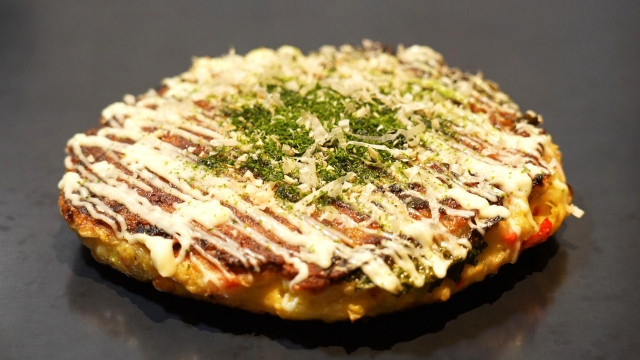
Another representative dish of Osaka is okonomiyaki. Okonomiyaki is prepared with a flour batter mixed with cabbage and other ingredients and then fried on a hot pan on both sides. It is then topped with similar toppings like takoyaki - okonomiyaki sauce, mayonnaise, bonito flakes, and aonori flakes. This is the so-called Osaka or Kansai-style okonomiyaki that many people know even outside Japan.
A variation of okonomiyaki is the Hiroshima-style okonomiyaki. Hiroshima Okonomiyaki is characterised by having noodles and a fried egg topping. It is cooked in layers as opposed to Kansai-style which is cooked in one go.
Another variation of okonomiyaki is Monjayaki which is a Tokyo specialty originating from Tsukishima. There are many monjayaki restaurants including branches from Tsukishima in Tokyo, but for the original taste visit Tsukishima which is accessible from the Oedo Line and Yurakucho Line.
6. Nabemono 鍋物
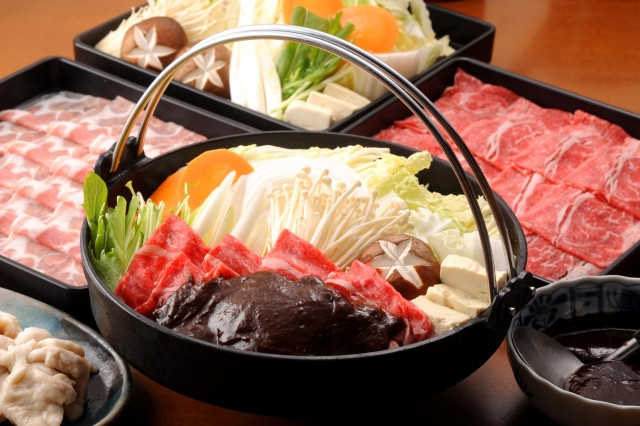
Nabemono are food cooked in hotpots which are called nabe in Japanese. There are all sorts of dishes that are cooked in hotpots in Japan, but we would like to introduce classic hotpot meals of sukiyaki, motsunabe, and shabu shabu:
Sukiyaki is a hotpot dish of meat and vegetables stewed in a shallow pot. The soup for sukiyaki is made from a mixture of soy sauce, mirin, cooking sake, sugar, and water. Other ingredients included are usually tofu, negi (Japanese scallion), hakusai (Chinese cabbage), and mushrooms (shiitake and enoki). Raw egg for dipping the cooked meat in is a unique characteristic of sukiyaki.
Shabu Shabu is a lighter tasting hotpot dish in comparison with sukiyaki which is sweeter in taste and has stronger flavours from seasoning. Shabu shabu is eaten by using chopsticks to dip and swish meat and seafood ingredients into boiling water or broth until cooked. The cooked meat / seafood is then dipped into sauce and eaten. Ingredients that take longer to cook like vegetables are left in the pot. At the end, the remaining and now flavourful soup is used to cook noodles or porridge to finish the meal.
Motsunabe is a hotpot of pork and/or beef offals called「ホルモン horumon」in Japanese. Chives and garlic are usually included in the soup broth to eliminate the odour from animal innards. The soup broth is usually miso-based.
7. Yakiniku 焼肉
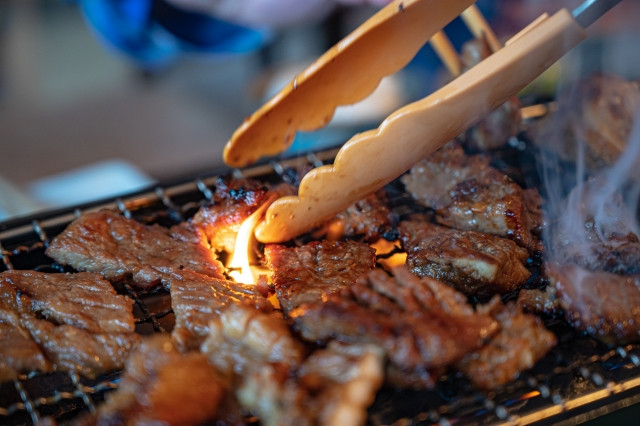
Yakiniku is highly recommended for meat lovers. Japanese style yakiniku uses thinly sliced meat that is cooked on a grill over an open flame at restaurants, or on electric hot plates / griddles at home. Yakiniku restaurants are usually DIY with customers being served raw cuts of meat to cook themselves.
Instead of whole steaks, yakiniku uses cuts of meat like tongue, harami (skirt steak), karubi, horumon (offal). Higher end yakiniku will have wagyu beef like Kobe beef and Matsuzuka beef which are popular for their sweetness.
8. Onigiri おにぎり
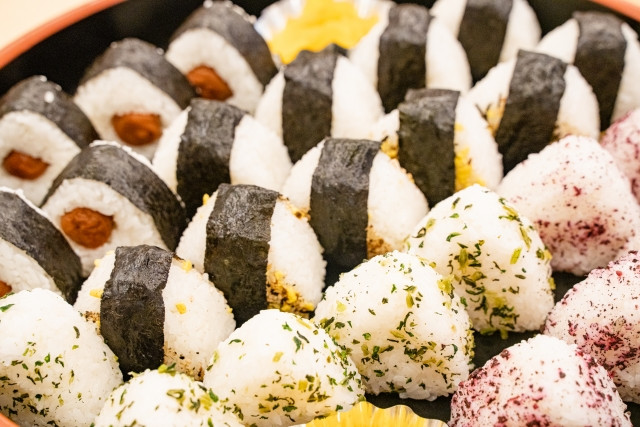
Onigiri are Japanese rice balls. They are also known as omusubi (おむすび). Onigiri are easy to make and not messy to eat. They are made with simple ingredients of cooked rice, seaweed sheet and a type of filling. There are also onigiri which are plain rice balls with just seaweed, or no seaweed altogether which are accompaniments for bento dishes.
Onigiri are prepared by shaping cooked white rice into triangular shapes. Fillings can go inside or sometimes outside the onigiri. Classic onigiri fillings are tuna mayonnaise, cooked salmon, umeboshi (pickled plum), cooked meat, and mentaiko.
9. Grilled Squid Ikayaki イカ焼き
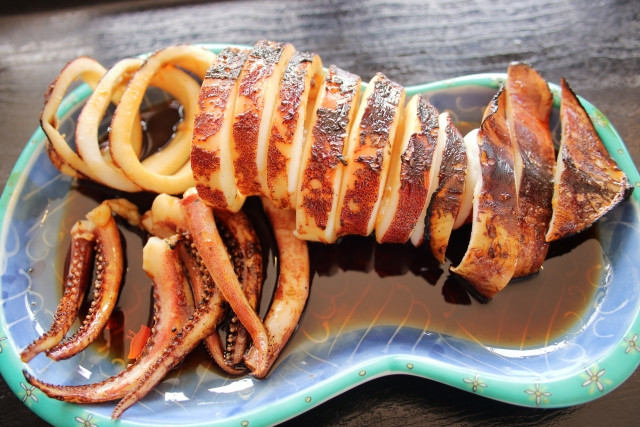
A very simple but superbly delicious snack is grilled squid. They make for great snacks to go with beer and are usually served at izakayas or festivals in Japan. Grilled squid is prepared by grilling a whole squid then cutting the main body into squid rings. At izakayas, grilled squid is usually served on a plate, but at festivals it is usually skewered on a stick with squid rings not cut all the way through for easier eating. It is served simply with a sauce.
10. Yakisoba 焼きそば
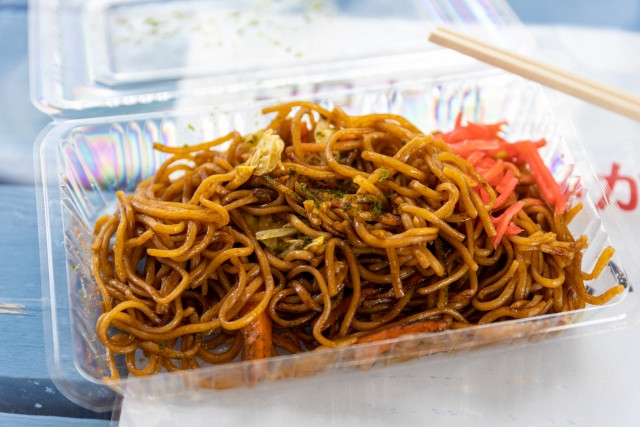
You’d think that yakisoba is fried soba, but yakisoba actually doesn’t use soba but a different type of noodle called「中華そば chuuka soba」which is Chinese noodles and are closer to ramen noodles. There are two ways to prepare yakisoba - salted, or with yakisoba sauce. The former is drier but fully brings out each ingredient’s sweetness whilst the latter is wetter and full of sauce flavours. Yakisoba is cooked with vegetables, usually sliced cabbage and carrots, and meat that can be seafood, pork or a mixture of both. It is then topped with a fried egg (optional), seaweed flakes, red ginger, mayonnaise, and bonito flakes.
Yakisoba served in bread is called yakisoba-pan. It is a savoury snack that can be found at school cafeterias and convenience stores in Japan.
11. Japanese Curry カレー

Japanese curry is a classic family dish enjoyed in households, restaurants, and even school provided lunches. Japanese curry is easy to make yourself with curry roux available in supermarkets. All you need to do is get some other ingredients like meat, carrots, onions, and potatoes and you can cook yourself a meal.
Other curry dishes you can find in Japan are soup curry which is a Sapporo specialty, curry bread which is soft on the inside yet crunchy on the inside, and curry udon a hearty meal for winter time.
12. Hamburg Steak ハンバーグ
Hamburg steak is a representative dish of many family restaurants in Japan. It is a meat patty made from a combination of ground beef and pork, finely chopped onions, breadcrumbs, milk, and other ingredients that is then cooked in a pan using a mix of frying and steaming methods. There are many sauces that go well with hamburg steak, the classic is demi glace sauce, but other sauces like brown gravy, onion, tomato, curry also goes well.
Hamburg steak is best enjoyed with French bread or steamed rice. Sides of vegetables, corn, mash potatoes, or a fried egg are also recommended.
13. Omurice オムライス
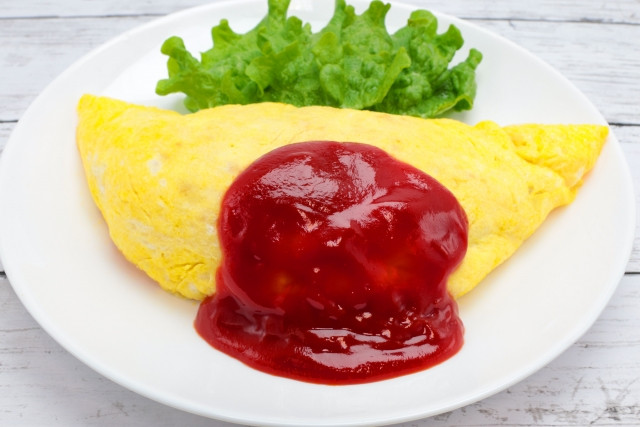
Omurice is a Japanese rice dish of omelette and rice. The classic omurice is ketchup chicken fried rice wrapped in an omelette with ketchup topping. Nowadays, there are many variations of omurice using demi glace sauce, white sauce, mushroom cream sauce, and meat sauce.
Different restaurants also have different ways of preparing the egg. Some are fully cooked and some leave them runny and creamy. A great skill in cooking omurice is to prepare an uncut omelette on top of the rice, then slicing it open to let the gooey eggy insides pour down like a waterfall around the rice.
14. Tonkatsu トンカツ
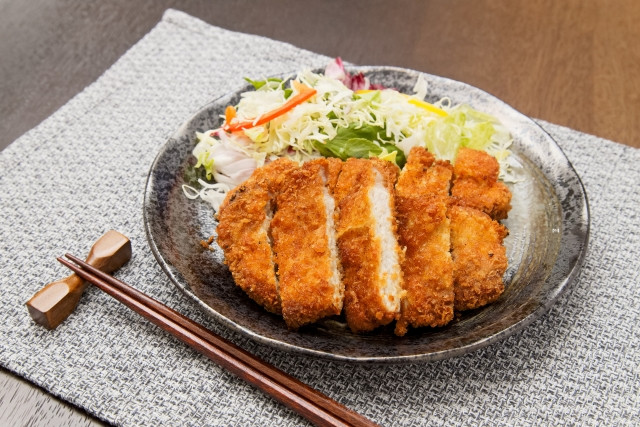
Tonkatsu is a classic home-cooked dish of pork cutlets. It is prepared by coating a cut of pork in breadcrumbs and deep frying it. The combination of rich tonkatsu sauce, crispy coating and juicy sweet pork makes for an appetising meal. Tonkatsu is usually served with a side of raw chopped cabbage which you can dress with your favourite salad dressing. Chicken cutlet and beef cutlet are also available. The differences in meat and sauce you use gives a different taste and feeling of satisfaction.
15. Korokke コロッケ
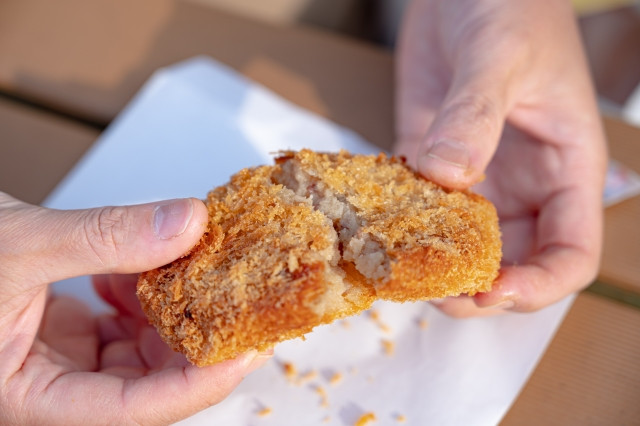
Korokke are Japan’s rendition of the French snack croquette. Korokke are characterised by their creamy mash potato insides and crunchy crispy coating for a sensational eating experience combining flavours and textures. It is prepared with a mixture of cooked ingredients (finely chopped seafood, meat, vegetable) and mashed up potatoes that is shaped into a patty, dipped into egg, flour and breadcrumbs to form a coating, then deep fried. You can easily get Japanese croquettes in konbinis and supermarkets in Japan.
There are some unique flavours of korroke in Japan you can try. For example, corn croquette, pumpkin croquette, cream crab croquette, and gratin croquette.
16. Doria ドリア

Doria is a dish that gives a twist to gratin by switching out pasta with rice. Compared to Japanese rice, pilaf and turmeric rice is more suitable to make doria which are what family restaurants use. Doria is a baked dish with cooked butter rice covered with sauce, then covered with cheese baked until a golden colour. Sauces that go well with doria are aplenty, there’s meat sauce, bechamel sauce, white sauce, cream sauce, and even curry.
17. Napolitan Spaghetti ナポリタン
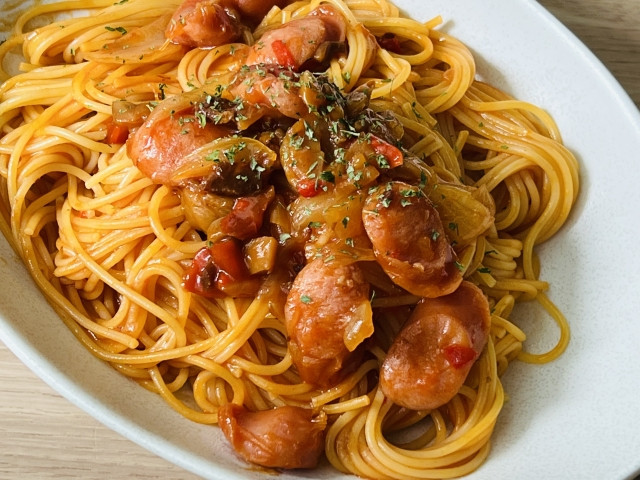
Napolitan pasta is a classic yoshoku dish of tomato ketchup spaghetti. The sauce is prepared using simple ingredients like onions, green peppers, sausages or bacon, button mushrooms and of course, tomato ketchup. It is usually served with parmesan cheese for garnishing and a bottle of tabasco sauce for added flavouring and spice.
18. Wafu Pasta 和風パスタ
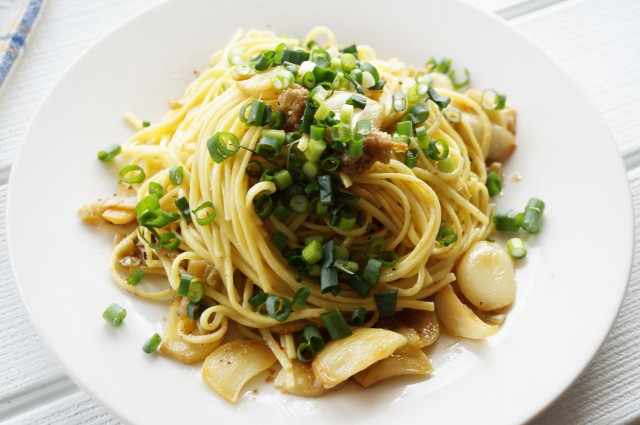
Wafu Pasta are Japanese fusion pasta dishes, or pasta recipes with a Japanese twist. There are quite a number of wafu pasta restaurants in Japan as the unique twist on pasta became popular. You can also get wafu pasta sauces at supermarkets to give it a try.
Examples of Wafu Pasta are miso eggplant meat sauce spaghetti, shoyu butter sauce spaghetti with seaweed and seafood toppings, soymilk carbonara pasta with onsen egg topping, and mentaiko pasta.
19. Sandwiches

You’ve not had an egg sandwich till you’ve tried Japanese egg sandwiches. Even ones from convenience stores are to die for, they’re creamy, they’re delicious, and they’re very affordable. But egg sandwiches are quite basic so here are some interesting Japanese sandwiches you should try:
Fruit Sandwiches are dessert sandwiches. Bread, freshly sliced fruits and whipped cream don’t sound like they blend well but somehow it works.
Katsu Sando are pork cutlet sandwiches. They are tonkatsu pieces and tonkatsu sauce wedged between bread slices. Great for a quick lunch break or snack.
Tamagoyaki Sandwiches are Japanese rolled egg omelette sandwiches, not the same as regular egg sandwiches. Tamagoyaki are a staple in bento and sushi shops, but who knew they’d taste great in sandwich-form too.
20. Beef Stew ビーフシチュー
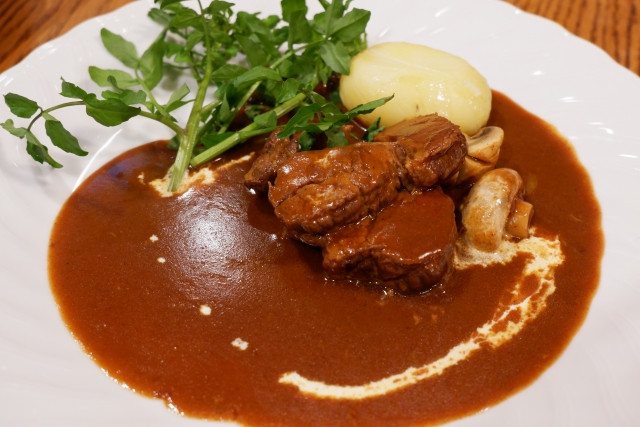
Japanese beef stew is on the sweeter side compared to Western counterparts and uses local seasonings. A beef stew done well has beef so tender it can be cut with a spoon. Beef stew in Japan is served with bread or, and of course, rice.
Considered a variation on beef stew is nikujaga (肉じゃが), a simmered dish of meat and potatoes. Nikujaga is also a classic home cooked food. The broth is made from dashi, soy sauce, mirin, cooking sake, and sugar. It is eaten with rice.
21. Ramen ラーメン
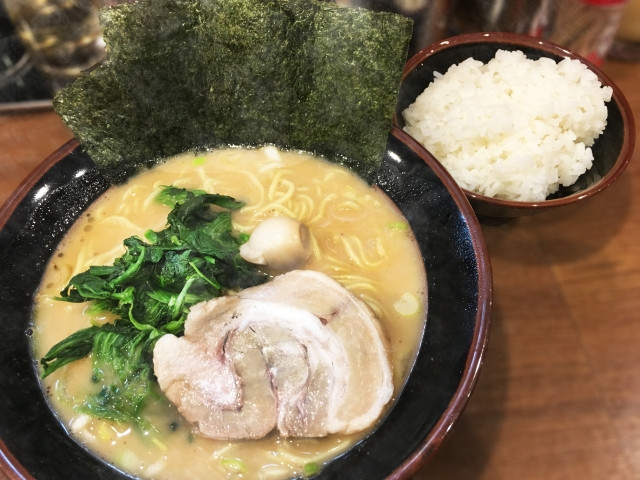
Ramen can’t be left out in an article recommending must-eat foods in Japan! Ramen is a chuuka dish also called chuuka soba. There are many famous ramen chains as well as mom-and-pop ramen shops across Japan. There are ramen shops where you stand and eat, and although rare in recent times, mobile ramen stalls.
There are many different types of ramen in Japan with different places of origin:
Hakata Ramen from Hakata in Fukuoka Prefecture is characterised by its thin noodles and tonkotsu broth.
Yokohama Ramen, also called Iekei (家系) Ramen, from Yokohama in Kanagawa Prefecture that is known for having a very rich thick broth and thick chewy noodles. Another unique aspect of Iekei Ramen is to finish up the remaining ramen broth with rice - carbs and carbs!
Sapporo Ramen from Sapporo in Hokkaido Prefecture uses miso-based broth and has bean sprouts, corn, and onions as toppings. There are many variations of this ramen now, some include seafood in the broth whilst some have made it spicy.
and more.
Recommended Reading:
22. Tsukemen つけ麵
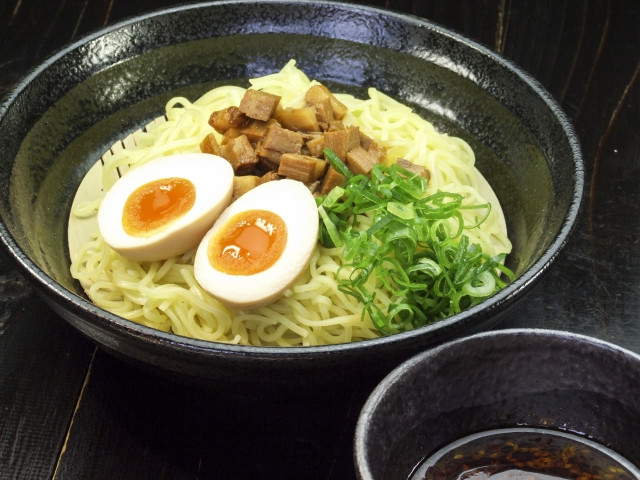
Tsukemen is considered a variation of ramen. There are many ramen shops that offer tsukemen, and vice versa with tsukemen shops offering ramen. Ramen is served with noodles nestled in a bowl of broth, but tsukemen is served with plain noodles in a bowl and a dipping broth to coat your noodles in delicious goodness. Common tsukemen broths are seafood based broths called「魚介 gyokai」and tonkotsu. You can request for dashi or hot water to water down your dipping broth for drinking. There are also places that offer rice to finish up your dipping sauce.
23. Gyoza 餃子
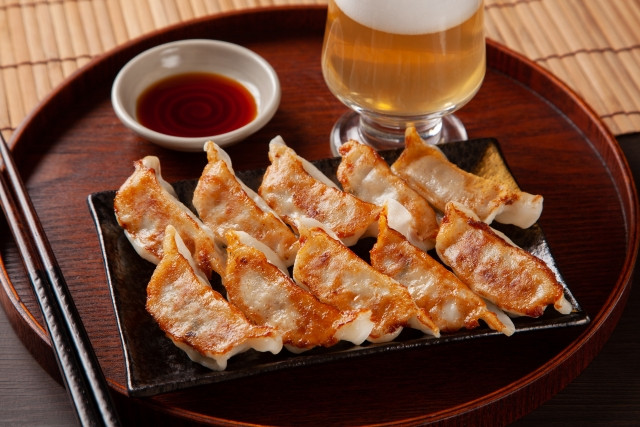
Gyoza are Japanese dumplings or potstickers. The city of Utsunomiya in Tochigi Prefecture is particularly famous for gyoza and is called the City of Gyoza. It is said that gyoza was first created as a re-creation of jiao zhi, China’s gyoza. Depending on the store, gyoza can be prepared in different ways - boiled, steamed, pan-fried, and deep-fried.
24. Hiyashi Chuuka 冷やし中華
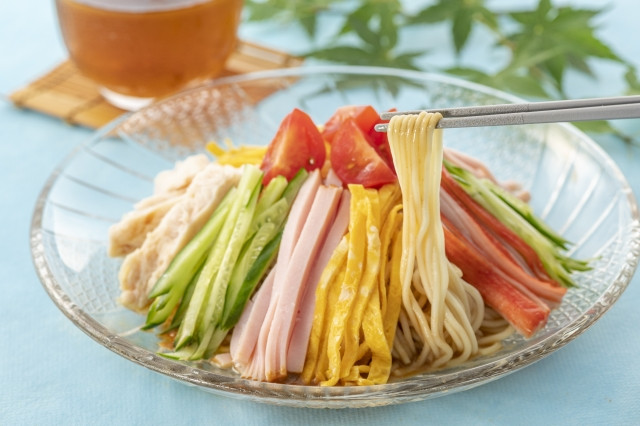
Hiyashi chuuka is a cold Chinese noodle dish that is popular in Japan during summer times. Some parts of Japan call it「冷麵 reimen」. Morioka City in Iwate Prefecture in particular is famous for its 「盛岡冷麵 morioka reimen」, aka Morioka Cold Noodles. Toppings for hiyashi chuuka are usually colourful to stimulate one’s appetite in summer. Common toppings are sliced ham, cucumbers, tomato, seaweed, and egg. Morioka’s reimen is served with spicy kimchi to kick up one’s appetite.
25. Kurozu Dishes 黒酢
Kurozu is black vinegar which is said to have high nutritional benefits like improving digestion, removing fatigue, and better immunity. Black vinegar is a type of health drink in Japan you can purchase in supermarkets. Its unique flavour that mixes tangy acidity and sweetness makes it great for cooking as well.
Ootoya, a teishoku chain restaurant, is particularly popular for its Black Vinegar dishes that are very similar in taste to Chinese sweet and sour dishes. They have black vinegar chicken and black vinegar fish slices that are cooked with vegetables cut into chunks. The sourness really stimulates your appetite.
26. Chanpon ちゃんぽん

Kyushu region’s Nagasaki is most known for chanpon and is usually referred to as “Nagasaki Chanpon”. Chanpon uses chanpon noodles with cooked pork, seafood, and lots of vegetables.
27. Karaage 唐揚げ
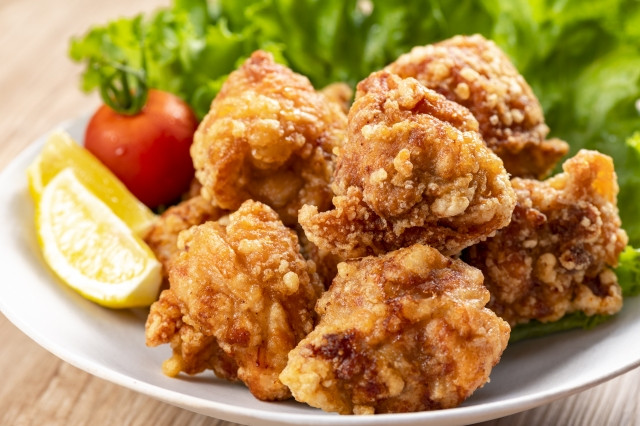
Karaage is Japanese fried chicken made by coating chicken pieces in flour or potato starch then deep frying it. Momo, or chicken thigh which is the juiciest part of the chicken, is usually used to prepare karaage. You can get karaage easily in Japan as they are served almost everywhere.
28. Mapo Tofu 麻婆豆腐

Japanese mapo tofu is very different from the original Szechuan recipe, so much so that it is nigh impossible to confuse them for each other. Japanese mapo tofu is flavourful with its spiciness toned down, or no spice whatsoever, to suit local tastes. There are many Chinese restaurants in Japan that offer mapo tofu, each with their own recipe so you will find different combinations of flavours and spiciness to suit your taste.
Mapo nasu, or mapo eggplant, is a variation on Japanese mapo tofu that uses eggplants in place of tofu.
29. Nikuman 肉まん
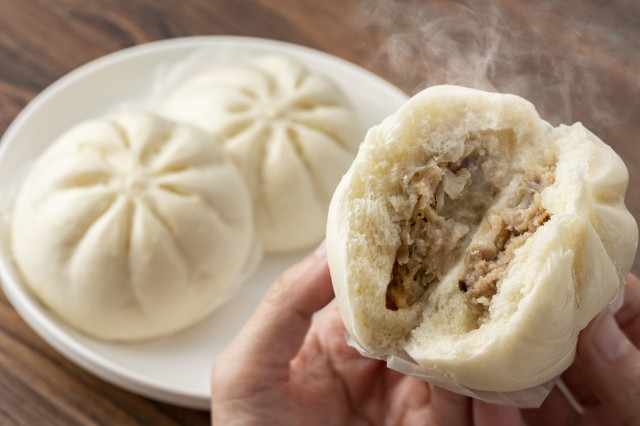
Nikuman are Japan’s take on Chinese steamed buns. Nikuman are most commonly available at convenience stores and make for a nice hot snack - nothing beats a piping hot nikuman in winter. Other types of steamed buns that are always at konbini include pizzaman (pizza steamed bun) and anman (red bean paste steamed bun).
30. Chahan 炒飯
Chahan is the Japanese word for Chinese-style fried rice. Compared to Chinese fried rice, it is said that Japanese chahan contains many more ingredients like meat and vegetables. There are many variations of chahan in Japan from seafood chahan, to charshiu chahan, to plain egg and chives chahan.
Have fun eating everything on this list!
Recommended Reading:








